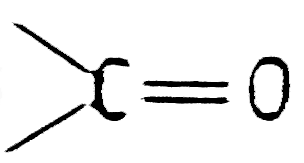Discuss the relative reactivities of carbonyl compounds in nucleophilic addition reactions.
Step by step video & image solution for Discuss the relative reactivities of carbonyl compounds in nucleophilic addition reactions. by Chemistry experts to help you in doubts & scoring excellent marks in Class 12 exams.
Updated on:21/07/2023Topper's Solved these Questions
- ALDEHYDES, KETONES AND CARBOXYLIC ACIDSBOOK - ICSECHAPTER - ALDEHYDES, KETONES AND CARBOXYLIC ACIDSEXERCISE - ISC EXAMINATION QUESTIONS (PART-I OBJECTIVE QUESTIONS) (FILL IN THE BLANKS)
27 Videos
- ALDEHYDES, KETONES AND CARBOXYLIC ACIDSBOOK - ICSECHAPTER - ALDEHYDES, KETONES AND CARBOXYLIC ACIDSEXERCISE - ISC EXAMINATION QUESTIONS (PART-I OBJECTIVE QUESTIONS) (MULTIPLE CHOICE QUESTION)
24 Videos
- ALDEHYDES, KETONES AND CARBOXYLIC ACIDSBOOK - ICSECHAPTER - ALDEHYDES, KETONES AND CARBOXYLIC ACIDSEXERCISE - EXERCISE (PART-II DESCRIPTIVE QUESTIONS) (VERY SHORT QUESTIONS)
282 Videos
- ALCOHOLS, PHENOLS AND ETHERS BOOK - ICSECHAPTER - ALCOHOLS, PHENOLS AND ETHERS EXERCISE - ISC EXAMINATION QUESTIONS
25 Videos
- APPENDIX II ( TYPICAL CONVERSIONS)BOOK - ICSECHAPTER - APPENDIX II ( TYPICAL CONVERSIONS)EXERCISE - AROMATIC CONVERSIONS
98 Videos
Similar Questions
The order of reactivity of carbonyl compounds for nucleophilic addition is
View SolutionCarbonyl compounds undergo nucleophilic addition because of :
View SolutionWhich gives nucleophilic addition reaction?
View SolutionAlkenes
 and carbonyl compounds
and carbonyl compounds  both contain a π bond but alkenes show electrophilic addition reactions whereas carbonyl compounds show nucleophilic addition reactions. Explain.
both contain a π bond but alkenes show electrophilic addition reactions whereas carbonyl compounds show nucleophilic addition reactions. Explain.
View SolutionObserve the following compounds
 ,
,
The correct reactivity order of above compounds towards nucleophilic addition reaction is :
View SolutionThe reactivity of carbonyl compounds towards nucleophilic addition reaction gets affected by
View SolutionAldehyde and ketones are specially susceptible susceptible to nucleophile addition because carbonyl group
_E01_581_Q01.png) (due to electronegatvity different between carbon and oxygen).
(due to electronegatvity different between carbon and oxygen).
_E01_581_Q02.png)
Positive charge on carbon makes it reactive towards the nucleophile. This addition is catalysed by acid. Reactivity of carbonyl compound towards nucleophilic addition increases in the electron deficience at carbonyl carbon. Thus, (-I.E.) group increase while (+I.E.) groups decrease the reactivity of carbonyl compound
Select the least reactive carbonyl compound for nucleophilic addition:
View SolutionAldehyde and ketones are specially susceptible susceptible to nucleophile addition because carbonyl group
_E01_579_Q01.png) (due to electronegatvity different between carbon and oxygen).
(due to electronegatvity different between carbon and oxygen).
_E01_579_Q02.png)
Positive charge on carbon makes it reactive towards the nucleophile. This addition is catalysed by acid. Reactivity of carbonyl compound towards nucleophilic addition increases in the electron deficience at carbonyl carbon. Thus, (-I.E.) group increase while (+I.E.) groups decrease the reactivity of carbonyl compound
Carbonyl compounds show nucleophilic addition with:
View SolutionAldehyde and ketones are specially susceptible susceptible to nucleophile addition because carbonyl group
_E01_578_Q01.png) (due to electronegatvity different between carbon and oxygen).
(due to electronegatvity different between carbon and oxygen).
_E01_578_Q02.png)
Positive charge on carbon makes it reactive towards the nucleophile. This addition is catalysed by acid. Reactivity of carbonyl compound towards nucleophilic addition increases in the electron deficience at carbonyl carbon. Thus, (-I.E.) group increase while (+I.E.) groups decrease the reactivity of carbonyl compound
Which of the following is most reactve to give nucleophilic addition?
View SolutionAldehyde and ketones are specially susceptible susceptible to nucleophile addition because carbonyl group
_E01_580_Q01.png) (due to electronegatvity different between carbon and oxygen).
(due to electronegatvity different between carbon and oxygen).
_E01_580_Q02.png)
Positive charge on carbon makes it reactive towards the nucleophile. This addition is catalysed by acid. Reactivity of carbonyl compound towards nucleophilic addition increases in the electron deficience at carbonyl carbon. Thus, (-I.E.) group increase while (+I.E.) groups decrease the reactivity of carbonyl compound
Which among the following carbonyl compounds is most polar?
View Solution
